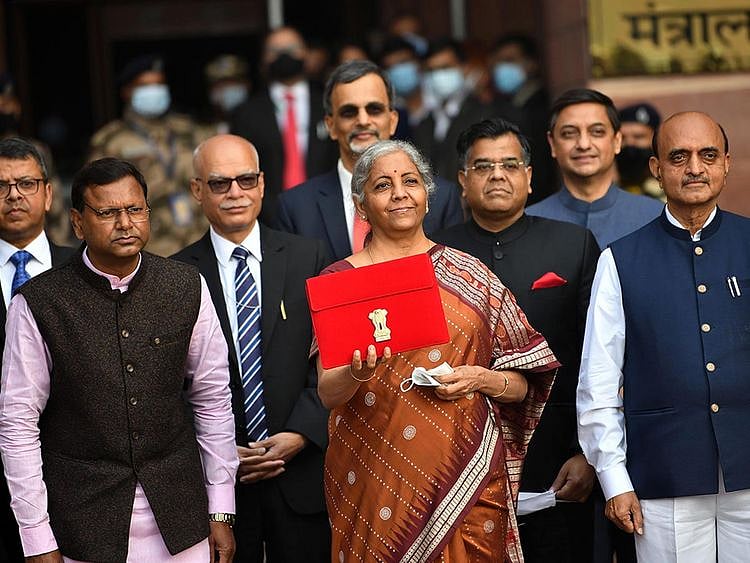India’s Budget 2023 is pro-middle class
As prudence is coupled with growth, Modi’s leadership aimed to secure India’s future

Budget aficionados in India may or may not know that the word itself comes bougette, Old French for a “leather bag,” like a knapsack. Incidentally, another common word, bulge, shares the same word origin.
In the 18th century, the British Chancellor of the Exchequer, presenting the financial plans for the year, was known to unlock his bag or briefcase to open the budget. It is another matter that the printed copies of the budget for members of the parliament in India had to arrive in a large truck in big sealed sacks.
But whatever the origin of the word, there is perhaps no other part of the world where the annual budget is more keenly awaited or debated. Many a middle class amateur financial maestro remains riveted to the TV to watch the finance minister, who has been Nirmala Sitharaman since 2019, read through the entire budget.
Also Read
India Budget 2023-24: What's cheaper and what's costlier?India President Murmu: Giving priority to deprived classes key to holistic developmentIndia sees GDP growth slowing on global weaknessUnion Budget 2023-24: India goes for growth, slashes income taxThis may easily take over three hours. After that, there are animated discussions around the dining table with the resident expert, after combing through the fine print, emerges with some striking or unusual detail.
The stock market is also keenly observed for an initial reaction. Soon after the conclusion of the FM’s speech, the Sensex shot up over 1000 points, while the NIFTY went up over 275 points. A resounding thumbs up, if there was one. The reasons are obvious.
There is a huge government capex planned, which will pump in Rs 10 lakh crores or Rs 10 trillion of capital investment, representing 3.3 per cent of GDP, into the economy. The money will go mostly into infrastructure. In addition, the Railway Budget has also gone up to Rs 2.40 lakh crore, nine times higher than 2013-2014.
This highest-ever allocation will help finish incomplete projects and enhance performance, including high-speed trains. This massive government investment, partially to be matched by the private sector, should give a huge fillip to job-creation, in addition to overall growth.
Secondly, this budget is not likely to be inflationary. The budget deficit will be capped at a manageable 5.9% from 6.5%. There seem to be few discernable populist measures or freebees, despite the general elections coming up next year.
Hopefully, the states, whose fiscal management is not as careful or competent, might follow the centre’s lead and not succumb to the temptation of profligacy. Keeping inflation in check is going to be one of the challenges of this budget.
Tax slabs altered
In addition, the tax slabs have been altered so that those with incomes up to Rs. 7 lakhs will have to pay no income tax. This is very unusual given that India’s average per capita income is not much more than Rs 1,00,000 a year, depending on which source you go to.
No wonder, the budget is perceived as clearly pro-middle class. Also because it has raised the benefits to senior citizens, doubling special interest rates for them on deposits upto 30 lakhs (3 million rupees). The Indian super-rich are happy too. The income tax rates of those with taxable incomes of over 1 crore have come down from 41% to 39%.
It is hoped, therefore, that spending will go up, spurring the economy. There remains, however, some confusion about whether it will be advantageous to shift to the new default tax regime, despite the loss in some exemptions, or stick to the old one, a choice left to individual tax payers as in the previous year.
The budget also emphases MSME—Micro, Small and Medium Enterprises—the Green Economy, in tune with the keynote at Davos, Cooperative Societies, opportunities for women, and, yes, millets.
India wants to lead the millet revolution, emphasising the shift to rough and health-giving grains rather than over reliance on rice and wheat, which consume much more water and fertilizers.
Privatising public sector
The disinvestment and monetisation targets of government assets have also been raised. Government hopes to earn over Rs. 50,000 crores by privatising public sector companies.
Opposition benches as well as critics will come up with their obvious criticisms. But many of the naysayers still grudgingly admit, “No harm done.”
The budget does not rock the boat. For example, capital gains taxes have not been touched because they might destabilize the investment and savings plans of many.
This, then, is a cautious, risk-averse budget, that is not quite populous, but strives to secure India’s growth rate, which is projected to be 10% in the coming year.
It is true that India is right now the fastest growing economy in the world. But India will have to incentivise exports and trade, if it is to keep growing in the changing world scenario.
"Modinomics" at work
Those praising the budget, especially from the treasury benches, hail it as another milestone in “Modinomics,” which is Prime Minister Modi’s own brand of economics.
They point to the tech play in the budget, with the push towards Indian microchip making and boost in other Science and Technology vectors.
The story of India’s budget is, of course, far from over—there are to be speeches by the PM, FM, and days of analysis by experts and commoners—before it is business as usual in India.
But, overall, this is a confidence-inducing budget. India Inc. as well as the nation at large will now push ahead with India’s growth story, knowing that the government is fully in control and fully behind them.
Under Modi’s leadership, India’s rise seems secure. Finance Minister, Nirmala Sitharaman and her team, especially India’s Chief Economic Advisor, V. Anantha Nageswaran, who was responsible for this year’s Economic Survey, have done a really good job.
Network Links
GN StoreDownload our app
© Al Nisr Publishing LLC 2025. All rights reserved.